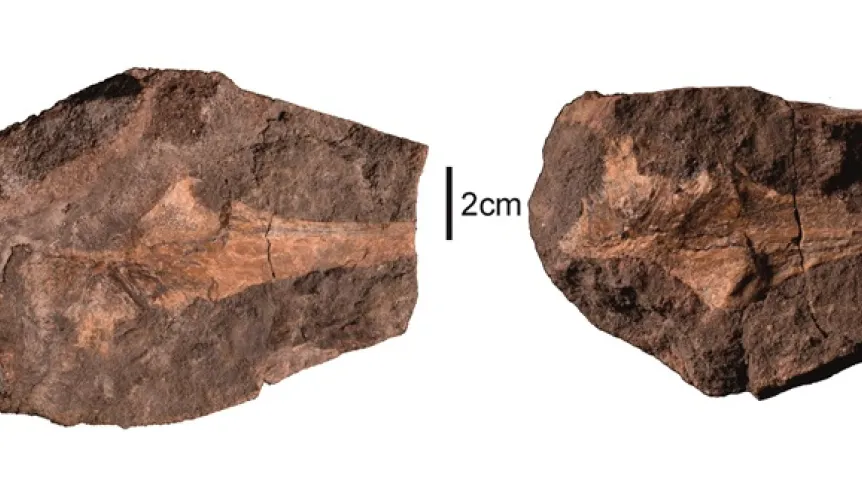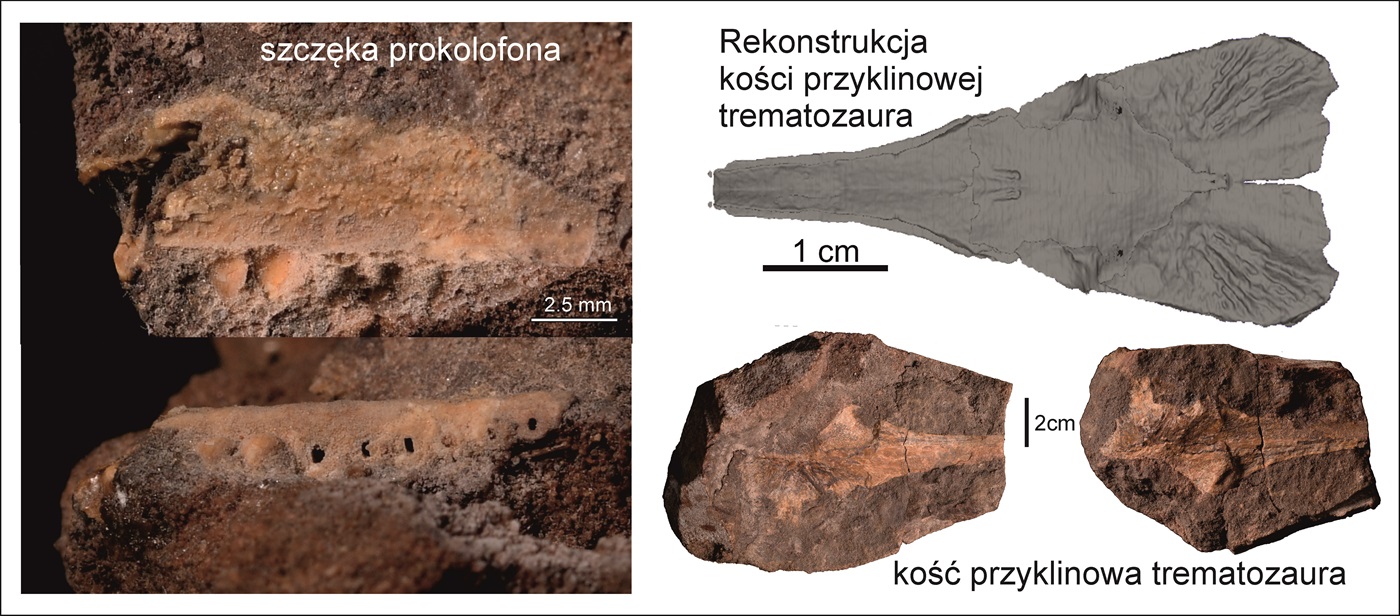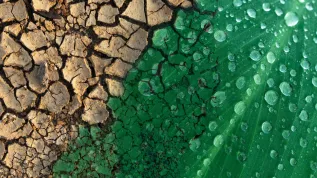
Trematosaurs, early Triassic amphibians that resembled today's crocodiles, lived also in the areas of today's Poland 250 million years ago, researchers from the Institute of Paleobiology of the Polish Academy of Sciences and the University of Warsaw have shown.
In a new publication in Acta Palaeontologica Polonica, the scientists also describe finds of Early Triassic reptiles (prolocophonids), also originating from the Holy Cross Mountains.
The research was conducted by Dr. Tomasz Sulej and Professor Marcin Machalski (Institute of Paleobiology of the Polish Academy of Sciences) and Dr. Mateusz Tałanda from the Institute of Evolutionary Biology at the Faculty of Biology, University of Warsaw.
The fossils were found in the 1980s in a decommissioned quarry in Stryczowice (Świętokrzyskie Voivodeship) by Marcin Machalski, who described the traces of arthropods from the group of arthropods preserved on sandstone slabs from this site.
Recent research showed that the remains of vertebrates found in Stryczowice, which had not been described before, were the parasphenoid (skull) bone of a Trematosaurus and a prolocophonid jaw.

’These small finds are of great scientific importance. Previously, we only suspected that trematosaurs could have inhabited the areas of today's Poland (for example, at the palaeontological site in Wióry in the Świętokrzyskie Voivodeship we found several teeth that could have belonged to them), but only this bone is a proof that this was actually the case,’ says Dr. Sulej.
The bone is 5-6 cm long and is embedded in a piece of sandstone. 'We have shown that it is the parasphenoid bone of Trematosaurus. These were very unique amphibians, because their evolution shows the gradual lengthening of the skull and narrowing of the snout, which can be observed today, for example, in gharials,’ the palaeobiologist says.
Fossils of these amphibians are already known from Germany and Russia (and from Africa). 'However, our bone is different from those two examples. We may be dealing with an intermediate form. I hope that further discoveries will provide answers regarding the evolution of these amphibians,’ Dr. Sulej continues.
The researchers also described a piece of jawbone with five preserved teeth that belonged to a procolophonid reptile. According to Dr. Sulej, it was a fairly common group of reptiles that resembled small lizards - with characteristic, water-drop-shaped teeth.
Fossils of these reptiles are already known in Poland, for example from Czatkowice near Kraków. 'Finding them in the Świętokrzyskie Mountains, however, proves that procolophonids were present in various environments and were diverse,’ says Sulej.
He adds that thanks to the involvement and support of the mayor of the Waśniów commune, Krzysztof Gajewski, his team was able to carry out excavations in the now closed quarry where the described remains were found 40 years ago. 'We have extracted several dozen kilograms of rock, in which we will search for further bones of Early Triassic reptiles and amphibians,’ he adds.
The Early Triassic period was about 250 million years ago. The climate in the lands of today's Poland was hot, and the preserved sandstone rocks mean that it was a semi-desert area with rivers flowing through it, which were the centres of life. Two groups of amphibians dominated in central Europe: capitosaurs and trematosaurs described in the paper. There were also reptiles, possibly including the ancestors of the first Polish proto-dinosaur Silesaurus from Krasiejów.
PAP - Science in Poland, Agnieszka Kliks-Pudlik
akp/ zan/ mow/ kap/
tr. RL













